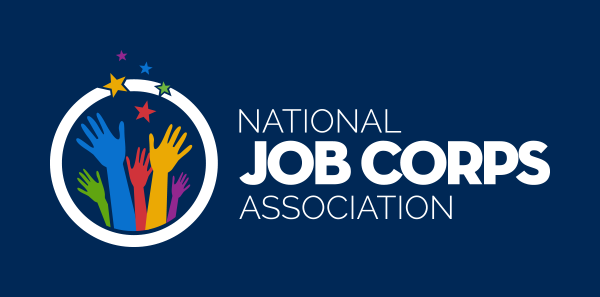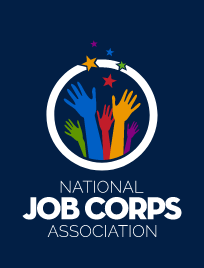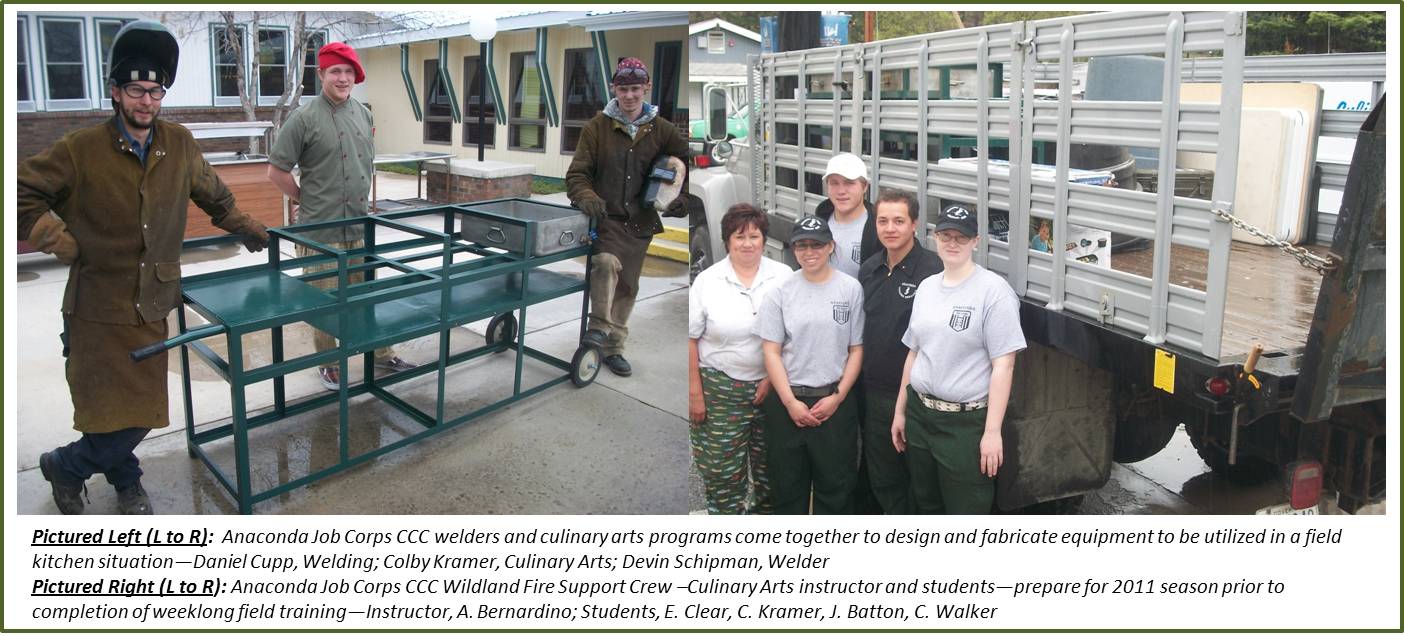Anaconda Job Corps Civilian Conservation Center (JCCCC) staff and students shift gears from aiding county officials during flood conditions to assisting federal and state agencies in wildland firefighting efforts.
The Anaconda JCCCC is associated with the Beaverhead-Deerlodge National Forest (BDNF) and the Dillon Interagency Dispatch Center (DIDC) in southwest Montana, where personnel and equipment are ordered and mobilized to support all-hazard incidents, such as floods and wildfires.
Workforces from the Anaconda JCCCC and the BDNF spent last week together in Preparedness Review. The field exercises are designed to expose and remind the new and returning firefighters how to effectively come together to get a job done (i.e., put out a wildfire) in the most efficient manner while working with differing levels of expertise and various types of equipment. The group of trainees participated in stations that covered the following wildfire suppression topics:
1. Interagency Structure Protection and Infrastructure Protection
- Initial Strategy and Action Plan
- Structure Triage
- Structure Protection Tactics including site preparation, engine operations, water use, foam/gel use
2. Medivac /Agency Safety Strategy & Tactics/Communications
- Stabilization, first responder duties, extraction
- Forest Medivac Plan, protocols as they relate to Forest-specific project work
- Radio use, repeaters coverage, cloning
3. GPS/Pacing/Acreage Estimations/Map Reading/Compass
- Correct datum use, decimal degrees, minutes/seconds, fire location
- Establish pacing per chain for each individual
- Estimate acreage from the GPS Units and Pacing Table in the Incident Response Pocket Guide (IRPG).
- Declination, triangulation from known points, following an azimuth.
4. Water Handling/Live Fire/Pumps/Line Dig/Firing Devices/Mop-up/Tool Use and Maintenance
- Hose lays, drafting with an engine
- Line digging, firing devices, tool use and maintenance, mop-up
- Operating various types pumps
In addition to Anaconda JCCCC students and staff completing the wildfire suppression training exercises, the Culinary Arts instructor and four of her best students were also in training. The Kitchen Crew supported the entire group of 70-80 personnel with breakfast, lunch, and dinner in a field-based dining hall. Support of a Kitchen Crew becomes equally important to those in the field. Whether they are knocking down a real fireline or just training to do so, eating well is a must.
Prior to Preparedness Review, Anaconda JCCCC Culinary Arts and Welding trades came together to design and fabricate equipment to be utilized in the field kitchen situation. The mobile cooking/cleaning unit traveled with the Kitchen Crew and served the purpose well for which it was intended.
“I participated in this field training last year, so I knew what to expect and could guide the three other students working with me,” said Colby Kramer, lead cook for Anaconda JCCCC Culinary Arts program. “Cooking outside is always well worth the experience. We were in a really pretty place, and the facility was better than last year’s. Plus our Welders made us some equipment that we didn’t have last year either.” Kramer continues, “Even though we didn’t have hot water, we were able to make our own. When problems arose like the awning that caved in from the snow, we helped each other out. Everybody was there to learn.”
In southwest Montana, May is still considered ‘preseason’ –well before wildfire season—and is an ideal time to hold training sessions such as the Preparedness Review. This year the month of May offered an atypical segment to preseason training. Flooded Montana communities were asking for help in controlling overflowing riverbanks and lakeshores, so some of the firefighters—those who come from the eight Anaconda JCCCC trades of welding, painting, carpentry, bricklaying, heavy equipment mechanics, heavy equipment operators, office administration and culinary arts—quickly became knowledgeable and skilled in filling sandbags. The students got firsthand experience in what it means to be prepared for any type of natural disaster and/or emergency situation.
Preparedness Review 2011 ended on a Friday and by the following Monday, DIDC was assembling a 20-person hand crew comprised of BDNF employees and Anaconda JCCCC students and staff to help with the firefighting efforts on the Wallow Wildfire in Arizona, see www.inciweb.org. Though southwest Montana is currently far from fire season and in the midst of flooding, the Southwestern United States missed its monsoonal moisture and is a drought-stricken tinderbox currently experiencing extreme wildfire behavior.
“When DIDC got the order from Wallow for a hand crew, it was easily filled by pooling Anaconda JCCCC’s and BDNF’s firefighting resources,” said Anaconda JCCCC Electrician, Gary Shelton, who also organizes and trains the Center’s Fire Suppression Crew of students.
“This is a prime opportunity that DIDC and the BDNF are offering Anaconda JCCCC,” Shelton assures. “Because the fire staff and students have spent the last few years corroborating their good work along with having just completed the weeklong training with the Forest fire organization, Anaconda JCCCC was able to secure a couple of spots on the hand crew that the Forest sent out for up to 14 days.” The remaining members of the Anaconda JCCCC Fire Suppression and Kitchen Crews are anxiously awaiting their turn.
Anaconda JCCCC serves over 230 students who eagerly accept the exposure to meaningful work, in diverse environments, involving tasks that allow them to increase their knowledge and skills that they work daily on center to improve.


 JOB CORPS
JOB CORPS 
